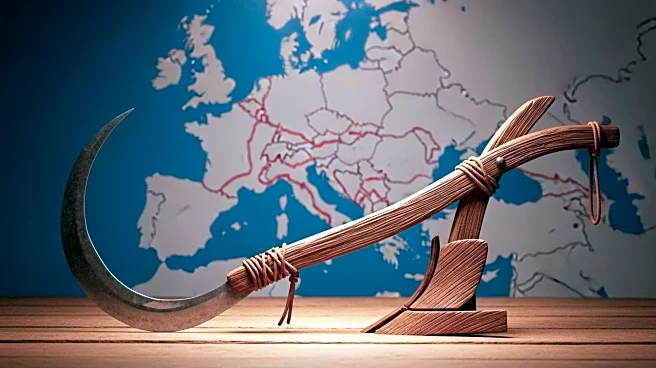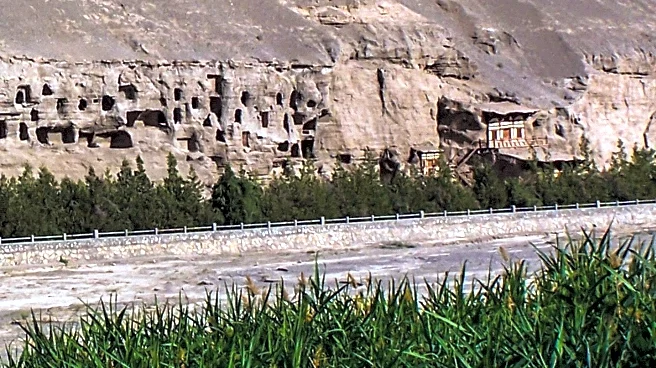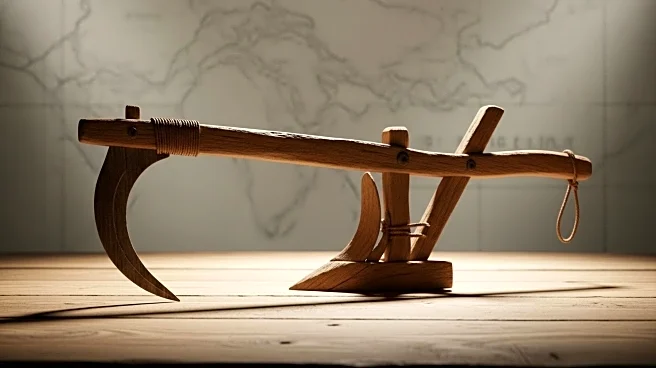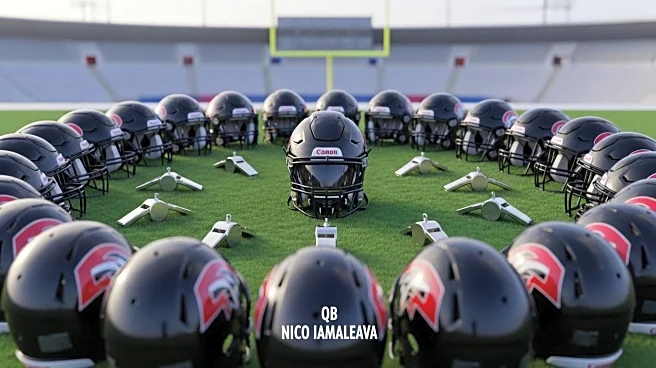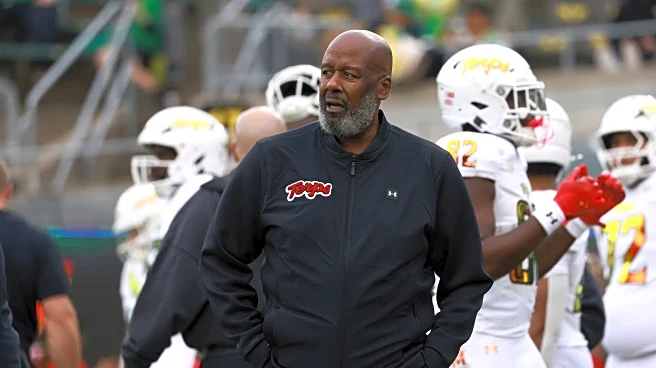What is the story about?
What's Happening?
A study conducted by researchers at Penn State has revealed that the spread of farming across prehistoric Europe was primarily driven by the migration of farming communities rather than cultural adoption by local hunter-gatherers. The research combined ancient DNA analysis, archaeology, and computer simulations to distinguish the effects of migration from cultural uptake. The study found that migration played a dominant role in the Neolithic transition, with cultural transmission having minimal impact. The team modeled population movements and tested these against genetic ancestry from hundreds of Neolithic individuals, concluding that migration was the primary force behind the spread of agriculture.
Why It's Important?
This research provides new insights into the Neolithic transition, a pivotal period in human history when agriculture became widespread. Understanding the mechanisms behind this transition helps clarify the development of early European societies and the genetic makeup of modern populations. The findings challenge previous assumptions about cultural adoption and highlight the importance of migration in shaping human history. This knowledge can inform studies on other major prehistoric cultural shifts and contribute to a deeper understanding of human evolution and societal development.
What's Next?
The study's methodology offers a framework for examining other historical transitions, such as the spread of metalworking, herding, and language dispersals. Researchers may apply similar techniques to explore the roles of migration and cultural transmission in these contexts. The findings could lead to reevaluations of other significant cultural changes in prehistory, providing a more comprehensive understanding of human development.
Beyond the Headlines
The study underscores the power of interdisciplinary approaches, combining genetics and archaeology to uncover complex historical processes. It highlights the potential for ancient DNA to rewrite early history and offers a model for future research into prehistoric cultural shifts. The research also raises questions about social boundaries and interactions between different groups, contributing to discussions on cultural identity and heritage.
AI Generated Content
Do you find this article useful?
